Mexico is one of seventeen countries worldwide classified as megadiverse, meaning it’s extraordinarily biodiverse and teeming with endemic species. Indeed, these seventeen countries account for over 70% of all species worldwide. Mexico, for example, boasts an astonishing variety of plants (23,000) and a vast bounty of 762 edible fruits, of which 53 are native.
Here are a few of the most interesting endemic examples:
Xoconostle (Opuntia joconostle)
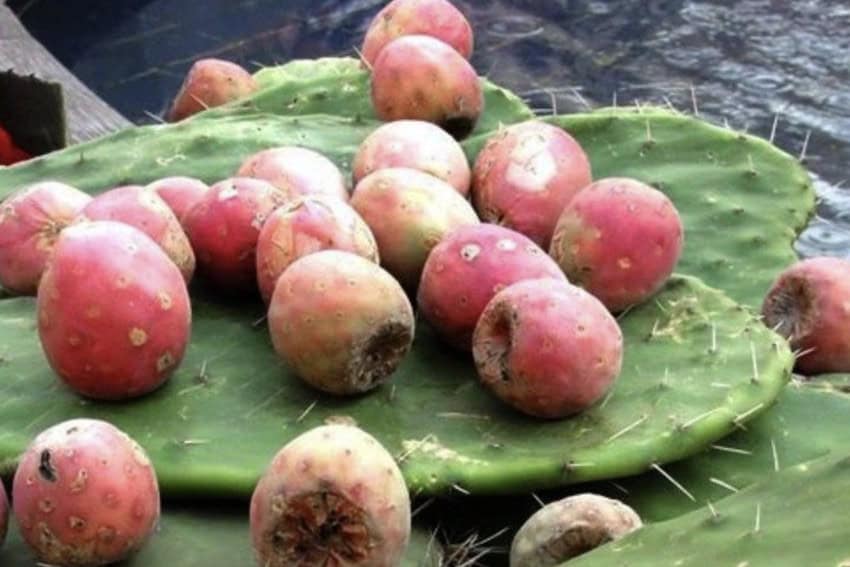
Mexico has plenty of fruit that grows on trees, but many of its most iconic fruits come from cacti. Xoconostle, a fruit from the nopal, is among the oldest and most culturally relevant, having been domesticated from about the same time as corn, 9,000 years ago, and has been a staple of salsas, food, and drinks ever since. It’s endemic to Mexico and grows in several states, including Aguascalientes, Durango, Hidalgo, Jalisco, Mexico, Michoacán, Querétaro, San Luis Potosí, and Zacatecas.
The name xoconostle is Nahuatl in origin, with its name translating to “sour tuna.” The fruit is quite tart, even when it has changed color from pale green, indicating unripeness, to a rich pink or red. That tartness has made it popular, often as a counterpoint to sweetness, in everything from jams and jellies to aguas frescas, liqueurs, snacks, sweets, and soups, the most famous of which is a beef stew, mole de olla.
Tejocote (Crataegus mexicana)
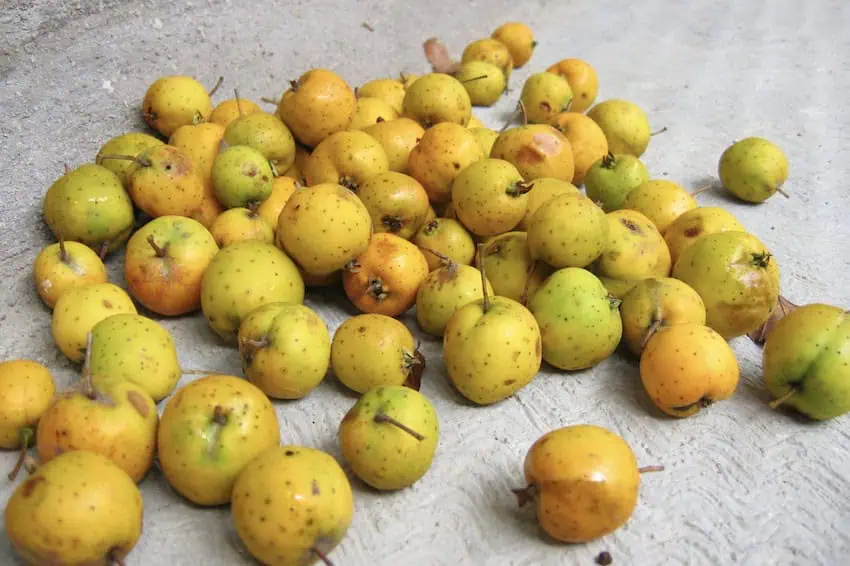
Tejocote is harvested from trees (or large shrubs) of the Hawthorne genus. This endemic yellow or orange fruit is overwhelmingly found in the state of Puebla, where some 5,000 tons are produced annually. However, numerous other states in Mexico also grow this crabapple-resembling fruit, whose most famous culinary use is as the signature ingredient in Ponche Navideño, or Christmas Punch.
This seasonal use is not an accident as the fruit traditionally ripens between October and February, just in time for it to be used in Day of the Dead celebrations, too. In this case, it’s often in candied form, with cinnamon and sugar added for dulce de tejocote, or chile and sugar for candy rielitos, each of which can be left as offerings on ofrendas. Tejocote is also an ingredient in jams, jellies, ates, and preserves.
Like the vitamin C-rich xoconostle, tejocote has also been noted for its health benefits and was used by pre-Hispanic healers to cure a variety of digestive and respiratory ailments.
Pitaya de Mayo (Stenocereus pruinosus)
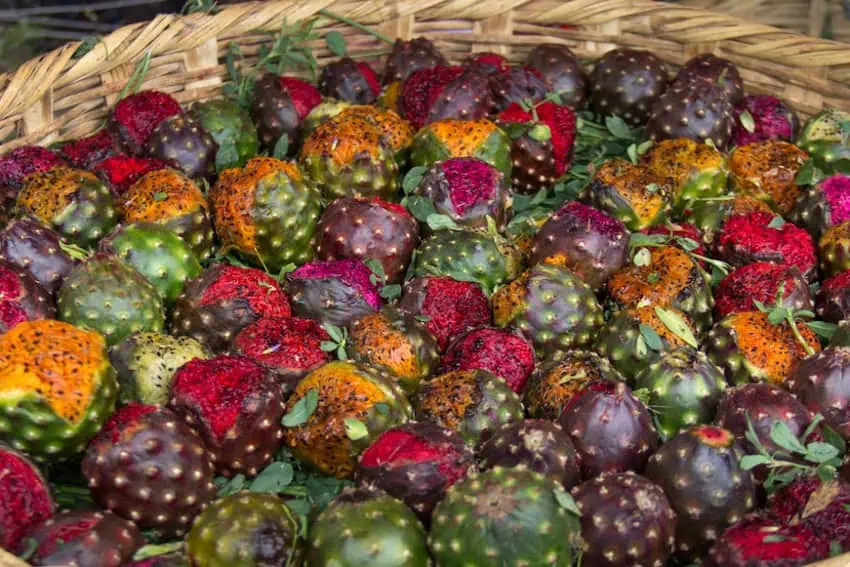
The gray ghost organ pipe cactus, found most commonly in states like Guerrero, Michoacán, Oaxaca, and Puebla, produces distinctive white flowers and a fruit that, like many species of pitaya, has a very short harvest season. For pitaya de mayo, as the name suggests, it’s in May. Although there’s not much time to savor its bounty, each ripe cactus offers an exceptional number of fruits (about 50 to 100, on average) that can be enjoyed in a variety of ways.
Pitayas have a long history of use in Mexico, dating back thousands of years, and with good reason. Of the 23 species in the Stenocereus genus found worldwide, 21 grow naturally in Mexico. Sinaloa alone is home to seven species. Agua de frescas, in which pitaya fruit is blended with water, sugar, and lime, are a popular summertime treat, but they also find their way into everything from ice cream and popsicles to candies and jam.
Tuna cardona (Opuntia streptacantha)
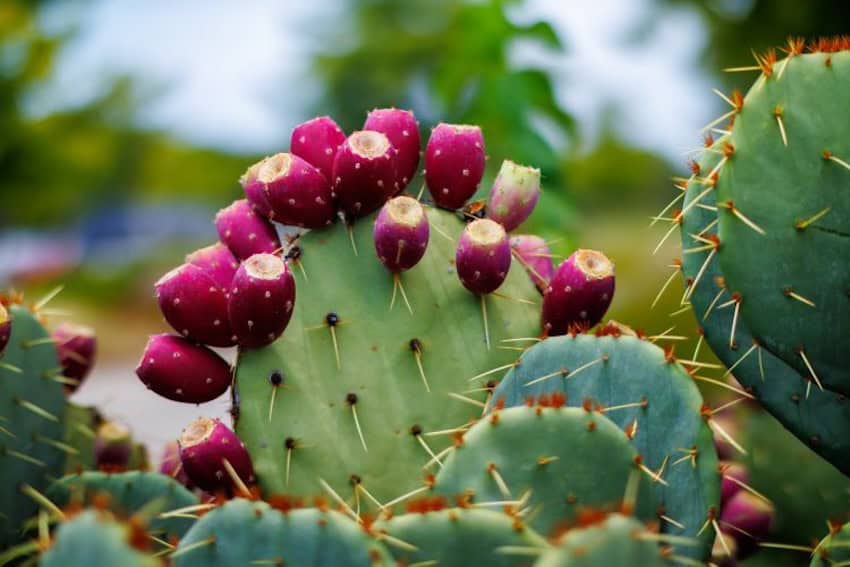
Another endemic cactus fruit, this one of the prickly pear variety, tuna cardona is notable for being grown at elevation (between 5,000 and 8,000 feet above sea level) in 13 mainland states of Mexico. It’s often so abundant in San Luis Potosi and Zacatecas that it forms dense prickly pear forests known as nopaleras, or tunales. These are not as prevalent as they used to be now that more areas have been cleared for agriculture, but tuna cardona remains an important food source in the rural areas where it still grows.
Some of the traditional preparations for it are a bit unusual. Queso de cardona, for example, belies its label as it contains no dairy. As such, it’s not really a cheese at all, but acquired the name because of its similar texture, which is achieved by boiling the fruit at high heat until it binds into blocks. Peanuts or almonds are sometimes added for added crunch and flavor.
However, the most famous of these concoctions is undoubtedly colonche, a fermented alcohol that has been made from the fruit for over 2,000 years, with its initial creation attributed to the Chichimecas. It’s still made in San Luis Potosí and Zacatecas, although residents of the former consider their version superior due to the addition of cinnamon.
Pitaya de Querétaro (Stenocereus queretaroensis)

Mexico’s endemic pitayas and pitahayas (which are spelled differently because they belong to the genus Hylocereus) are the gift that keeps on giving. This picturesque columnar version of the former, which somewhat resembles a candelabra in shape, is not, despite its name, confined to the boundaries of Querétaro. Rather, it can be found in several states in Mexico at elevations of up to 6,000 feet. Like other pitayas, the fruit of Stenocereus queretaroensis (aka “pitayo”) is avidly sought after during its short growing season for summertime specialties like aguas frescas and ice creams.
However, the most interesting culinary application for this pitaya is dehydrating it and turning it into a powder, which can be made into flour and used to bake bread. No, it can’t be used exclusively, but it can replace wheat flour for up to 30% of the formulation.
Capulín (Prunus salicifolia)
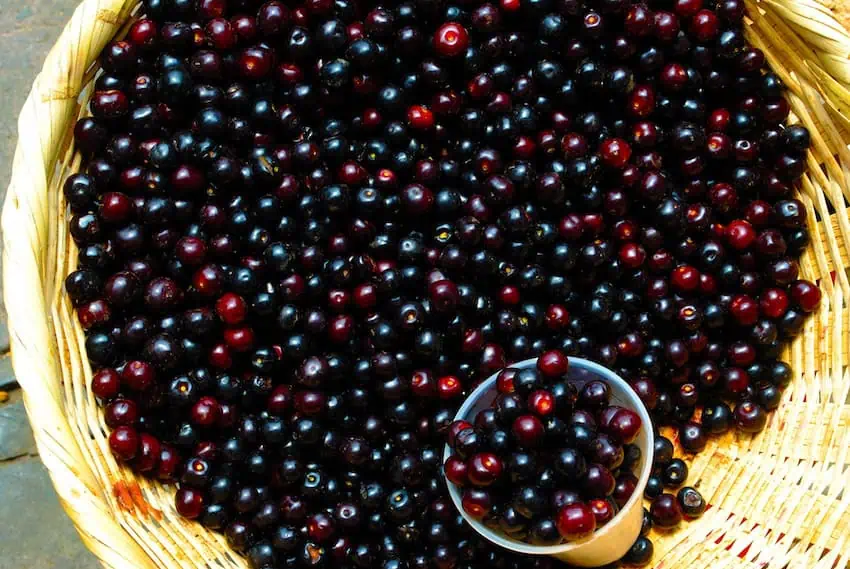
The five species above are all endemic, meaning they exist naturally in Mexico and nowhere else. That’s a slightly different category than native, which means the fruit originated in Mexico but has since been transplanted to other locales. A good example of this would be capulín (Prunus salicifolia), a wild black cherry which is thought to have originated in the Valle de Mexico, but is now cultivated throughout the Americas and in Europe. It was an essential nutritional source for the Spanish Conquistadors when they arrived in Mexico during the 16th century, as it was for the Mexica, who so valued the fruit that they had two words for it based on the size of the cherries.
Like almost all of Mexico’s endemic fruits, the culture and traditions that surround capulín are regional, and yes, it can be enjoyed fresh, too. Although in this case, it isn’t enjoyable unless its cherries are fully ripe, since they’re a bit too bitter otherwise.
Fortunately, in Mexico, there are always other fruity options to choose from in the meantime.
Chris Sands is the Cabo San Lucas local expert for the USA Today travel website 10 Best, writer of Fodor’s Los Cabos travel guidebook and a contributor to numerous websites and publications, including Tasting Table, Marriott Bonvoy Traveler, Forbes Travel Guide, Porthole Cruise, Cabo Living and Mexico News Daily. His specialty is travel-related content and lifestyle features focused on food, wine and golf.
